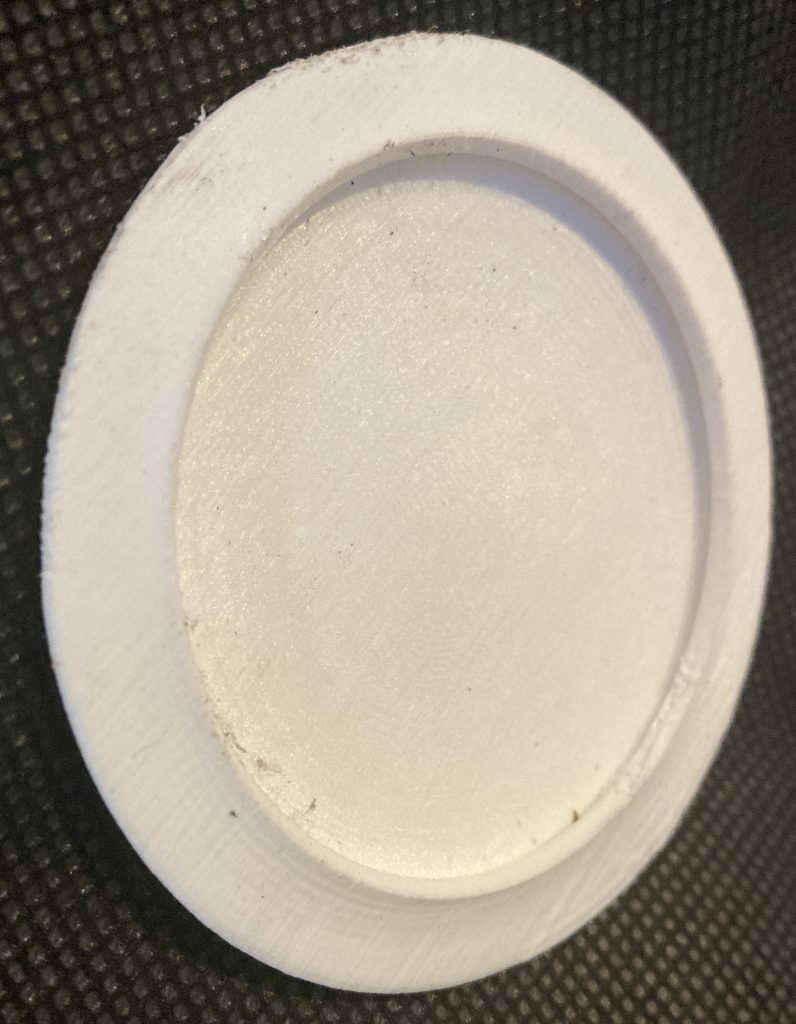After I had made a thrower that worked I discovered that even at its best it was nowhere nearly as intuitive or easy to use as just tossing the discs by hand. It was most poignant when I was trying to lay up instead of making a shot from a distance. A layup shot requires delicate control over how much velocity is imparted to the disc and honestly, that was extremely hard with the plastic thrower I had made, despite the fact that it was the best thrower yet.
So, I began throwing the discs by hand. I found that there were a few ways I could impart enough spin to get them to fly like regular golf discs. But, none of those ways were how I typically throw golf discs.
The easiest way I found was the underhand throw. This is how a softball pitcher throws underhand, but the disc is flipped like a backhand throw right at the very end. The underhand throw is equivalent to a backhand throw as far as flight dynamics are concerned.
Another way I found is to snap the disc. You put the tip of your thumb inside the disc against the rim and your pointer finger outside the disc in position so that if the disc were not there you would be able to snap your fingers. Then you snap your fingers. The disc flies well if you can figure out how to aim.
I also tried wrapping my pointer finger around the disc as far as it would go to throw something lie a forehand. That hardly ever worked, but once in a while it flew, but it was clear it didn’t impart as much spin as I would like.
I practiced a lot indoors until I could cover the distance of the entire space in a single throw fairly reliably (underhand).
Then I took all my discs to a local park to see how they flew outdoors. The results were not what I expected. I had with me a #5, two #6s, a #8 and a second #8 that was 15% deeper than a normal one.
One of the #6s and the normal #8 cracked on their first throw and I put them away. They might have already been cracked. I was throwing on grass so I’m surprised they cracked.
The #5, which is only 70mm and weighs only 5.5 grams was worthless outdoors. The wind blew it around and it couldn’t go very far. It is great indoors – maybe best of all the ones I’ve printed. But, outdoors it was by far the worst disc.

My white #6 that didn’t crack weighed 13.2 grams. It worked much better than the others, but it was seriously overstable. It’s very thin and has an undercut bottom. But, it cut through the wind and I was easily able to throw it well over 30 meters. It also was a champion roller.

The next best disc was the yellow, thick #8 which weighed 11 grams. It was more stable and I was able to use it to shape throws around obstacles. I printed it with an extra 15% depth (thickness) so it would behave more like a putter. It is heavier than a normal #8 by half a gram, but it also has a thicker wing profile and flies differently.
I played about 20 holes of golf, choosing trees, trash cans and some traffic cones as targets. I was able to make par 3 on 35 meter holes… sometimes. Into the wind 35 meters is a lot. Mistakes can be costly as a wind can carry a small disc farther than you might expect. I had some triple bogeys too.
I aced two holes where the target was a big tree trunk and the tee was about 15 meters from it. It was always the #5 that could go that far, and always underhand. I got pretty good at driving with it, but I think a disc with a profile like #5, but 75 or 80mm and 3mm thick skin would probably be an awesome driver. I will make one and find out.
What I learned from this is that small disc golf can be played outdoors but you need somewhat heavier discs, and a thinner profile is better than a thicker one. Thicker skins result in heavier and stronger discs, so discs with a 3mm skin that are 75 or 80mm would work much better outdoors. But, indoors those discs are not that great. First, they are heavy enough to break things, and second, over short distances the heaver discs just follow a ballistic path. They don’t fly like golf discs.
Indoors the 5.5 gram 70mm disc #5 is awesome. It has a realistic flightpath even if it only flies 5 meters. It can curve around obstacles and you can get it to follow and S-shaped flightpath with an anhyzer release. You definitely need to keep control of the angle of attack – whether it is pointing above the horizon or not, and by how much. There is a narrow range of angle of attack that yields a long throw. Others hit the ground or fly upward, lose speed quickly and fall off.
Up Next: Starting Production